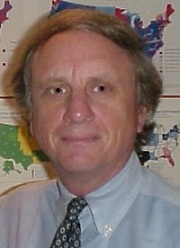
As a result of the 2010 federal Census, we know there were more than 308 million persons in the United States as of April 1, 2010.
As most political observers in America are keenly aware, the real import of the Census is that the boundaries for all representational districts need to be redrawn to reflect the shift of population over the previous decade.
This means that 428 of the 435 districts for the 113th Congress will be somewhat different than the districts used in 2010. It also means that new districts will be drafted for 7,382 state legislators around the country as well as for countless county commissions, city councils, and other local boards and commissions that use districts for elections, either on a partisan or non-partisan ballot. Today, this process is known by most as redistricting.
The results of the Census confirmed the same general population trends of the past several decades — that is, the seemingly relentless move of persons from the East and Midwest to the South and West. From an interstate congressional perspective, 12 seats shifted from 10 donor states to 8 recipient states. From an intrastate legislative perspective, there is more of a mixed pattern, though in the East and Midwest many big cities lost ground relative to the surrounding suburbs. From an Electoral College perspective, this shift provides some marginal benefit to the Republicans based upon the 2008 vote. The new apportionment will affect presidential elections for the next three elections, through 2020.
The results of the Census confirmed the same general population trends of the past several decades — that is, the seemingly relentless move of persons from the East and Midwest to the South and West.
While several states have made progress on their districts, litigation has barely commenced. There are a few general concepts that will affect this process for the upcoming decade:
Emerging Minorities: Two population subgroups that experienced large rates of growth over the decade are the Hispanic/Latino and Asian communities. These groups are also ones that have been largely left out of the political process to date. For decades past, targeted and passionate activity at all levels has improved the political empowerment of the African-American community. The 2010 census indicates that similar activities may now be needed for other emerging minority communities.
However, practical considerations are likely to make it difficult for these groups to transition into the political mainstream with respect to appropriate representation in the halls of Congress and state houses. Both communities differ in significant ways from the African-American community. First, they are much more likely to be immigrants and less likely to be citizens, and thus less likely to be eligible to register to vote. Second, they are much more geographically dispersed. Even if there are areas where they first settle upon entry into the country, many are likely to move elsewhere for simple reasons of economics.
This makes drafting some districts for these groups difficult without tortuous amalgamations of census geography to achieve a racial end, a practice that has been discouraged by the courts. On the other hand, if districts can be drafted that reflect logical communities of interest for these emerging minorities, public policy would dictate that keeping these areas together in a district would be beneficial.
For decades past, targeted and passionate activity at all levels has improved the political empowerment of the African-American community. The 2010 census indicates that similar activities may now be needed for other emerging minority communities.
Citizenship: There is no longer any “long form” for the federal Census. The information that was formerly collected from a subset of the population once a decade is now collected on an ongoing basis by the Bureau of the Census through the American Community Survey (ACS). The ACS is the only source for information on the citizenship status at low levels of geography. Citizenship status may be an important consideration in drafting districts and/or in litigation brought under the federal Voting Rights Act (VRA). There is still some question as to the applicability of the citizenship data for districting as well as several data concerns relating to any use of this information.
Prisoner population: There was some discussion in preparation for the Census about the Census residence of prisoners. The Bureau of the Census has now provided some information that may allow the consideration of this concept during redistricting. The focus on prisoner population varies state by state because large prisons may be in either rural areas of a state or in urban downtown areas. In addition, there are additional operational concerns about integrating this information into the districting process.
The focus on prisoners alone, and not on other persons who live in what the Bureau calls “group quarters” (e.g., dormitories, military barracks), only addresses part of the puzzle and does not squarely address the longstanding rules established for Census residence. Nevertheless, the rationale for not counting prisoners where they are incarcerated is that they are persons who cannot vote where they live and thus artificially inflate the population of a district. This is a concept relating to the overall weight of a vote.
When the Reapportionment Revolution of the 1960s transformed the political landscape, the focus of the numerous opinions from the U.S. Supreme Court was clear: that the very reason for the change to a population-based standard for redistricting was that of vote equality. As the Court stated in the 1964 case of Reynolds v. Sims: “the overriding objective must be substantial equality of population among the various districts, so that the vote of any citizen is approximately equal in weight to that of any other citizen in the State.”
A primary tenet of democracy is that the majority should determine the outcome. For elections held by district, this means that the preferences of the majority of the voters should translate into a majority of the seats in a chamber or in a congressional delegation. However, numerous instances exist in which the number of actual voters in districts varies greatly, sometimes by a ratio of three to one.
The end result of such an uneven distribution of actual voters across districts is that the possibility exists that a majority of the seats in a chamber may be elected by a minority of the voters.
Clark Bensen is the founder of Polidata, a company that has been collecting, analyzing and disseminating data related to the art of politics since 1974.




